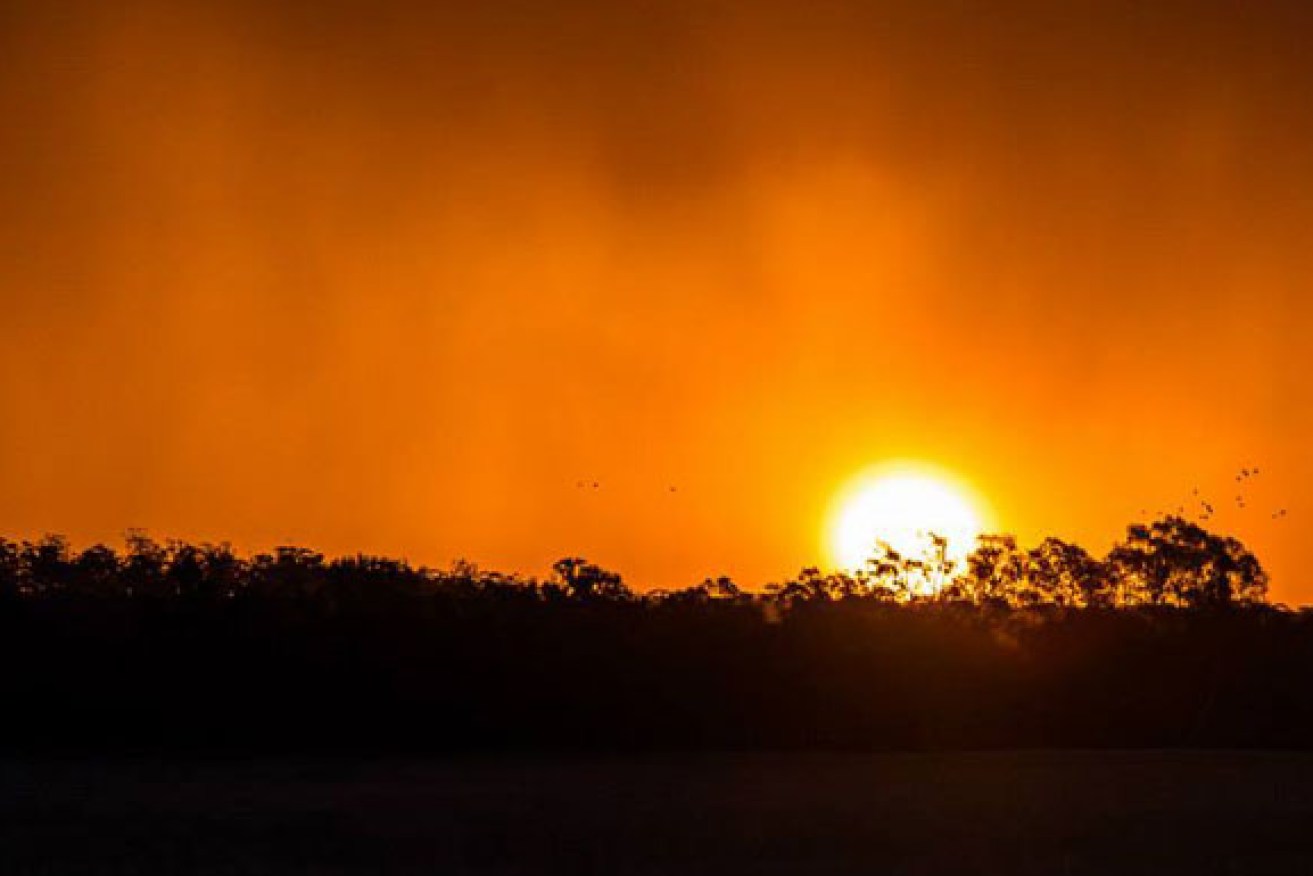The wild extremes endured by Australia in October are the result of a planet “on steroids”, a climate expert claims.
The continent has been alternately scorched, buffeted, zapped and pounded with big chunks of ice, depending on where you live. This week alone, Melbourne has endured a wild electrical storm while Sydney saw temperatures soar beyond October averages.
• Wild weather brings Melbourne to a standstill
• PICTURES: Sydney lashed by storms
• Sea rises from ice melt now ‘irreversible’
Three capital cities have already recorded hotter extremes this month compared to last October, weather bureau data reveals. Adelaide smashed last October’s record by 4.3 degrees with a high of 37.3 degrees. Darwin’s high of 36.1 degrees so far this month is hotter by 0.8 degrees than this time last year, while Melbourne’s high of 31.8 degrees is just 0.2 degrees hotter than last year.
Earth itself is on track for its hottest year on record, having already broken the record for August and September.
Climate extremes
The Climate Institute national policy and research manager Olivia Kember told The New Daily that energy from the sun is “supercharging” our weather systems, “basically putting them on steroids”.
Bureau of Meteorology has some incredible shots of lightning storms in Adelaide https://t.co/wH6twTCoNm pic.twitter.com/NjA6WQktxB
— BuzzFeed Australia (@BuzzFeedOz) October 26, 2014
Parts of western Queensland have become a dust bowl because of a dry air mass hovering over the continent, to the detriment of farmers, and drought has also struck southern Mallee and northern Wimmera in Victoria.
According to the CSIRO, Australia’s climate has warmed by 0.9 degrees since 1910, with more extreme heat and fewer cool extremes. Seven of the 10 warmest years on record have occurred since 1998, with 2013 the hottest ever.
Bipolar blast from the Arctic

Huge swathes of Australia battled thunderstorms, while other parts of the country broke heat records. Photo: Rikki Pool Photography
But while some swelter, other parts of the country have been attacked by wind, rain, hail and even snow.
Victoria, South Australia, New South Wales and Queensland endured vicious thunderstorms early this week, which left thousands of homes without power, wreaked havoc on public transport, and damaged homes and cars.
Two separate rounds of severe hail bombarded Perth and much of southern Western Australia only days apart in the week ending October 22, and drenching rain of up to 140 millimetres fell in some parts of the WA grain-growing region earlier in the month, disrupting the harvest.
Weather bureau climatologist Greg Browning told The New Daily that storms and hail are common in late spring, but the amount of hail that has fallen is “definitely unusual”.
Just a bit of lightning over #Brisbane this afternoon #bnestorm pic.twitter.com/kmkbGoMOGz
— Sam Petherbridge (@s_peth) October 27, 2014
Hail stones greater than two centimetres in diameter fell in some parts of the state, and in some places “it was approaching golf ball size”, Mr Browning said, with the potential to break windows, dent cars, clog drains and destroy crops.
At the same time, much of the state has been melting in a heat wave.
For example, Warburton, in the interior of WA, has seen 12 days in a row of greater than 35 degrees maximum temperatures, which is “a new record”, Mr Browning said.
Heat waves are occurring more often, earlier in the year, and for longer, he said, which may be “a portent of things to come” for the hot Aussie summer.
Weather bureau climatologist in Victoria Kevin Smith told The New Daily that the storms in his state weren’t necessarily out of the norm, but “probably caught people out because we haven’t had a decent storm for a while like that”.
Why so wild?

A scorching sun sets through a haze of showers in Newbridge, VIC. Photo: Rikki Pool Photography
The Climate Institute said that October has certainly been “unusual”, in that we have endured warmer and wilder weather for no good reason. Except climate change, that is.
El Nino, the weather system that cops all the blame at dinner table conversations, has been fairly well behaved this month. The sun has also gone easy on our planet, pounding us with slightly fewer solar rays.
This leaves greenhouse gases trapping the sun’s energy as the only plausible explanation, The Climate Institute’s Olivia Kember said.
Ninety per cent of this solar energy is soaked up by the oceans, heating them up. The rest of this energy is injected into our weather patterns, putting them “on steroids”, she said.
But University of Melbourne climate change expert Professor David Karoly told The New Daily that the only normal thing about Australian weather is its abnormality.
“What’s usual about Australian weather is that it is very variable,” Professor Karoly said.
Severe thunderstorms coupled with wet and dry periods is “very common” in spring, particularly in the southern parts of country, although the rains we’ve seen are possibly “a little bit earlier”, he said.









